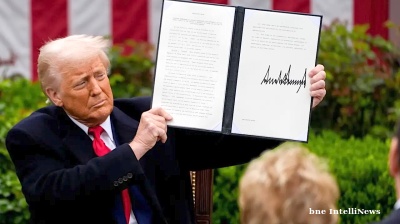Central European factories remain on an uncertain footing, purchasing manager indices released on December 1 suggest, despite further signs of recovery in the Eurozone, the source of an overwhelming chunk of export demand for the region’s factories.
The Eurozone’s composite PMI (which also includes services) rose to 54.1, its highest level recorded so far this year, according to a preliminary report released on November 23. That signalled the strongest monthly increase in output in the single-currency region since December 2015. Germany, the most important export market for Central Europe’s small, open economies, led the growth.
The Visegrad states responded more enthusiastically to that trend in November than they had in October, but the readings illustrate uncertainty remains in the driving seat. At the same time, the PMI’s of the Czech Republic, Poland and Hungary all now sit comfortably above the threshold of 50 points separating expansion from contraction for the first month since the first half of the year.
Business conditions in the Czech manufacturing sector continued to improve in November, however hopes for a strong end to the year were dented somewhat as the PMI reading dropped to 52.2 from the previous month’s 53.3.
The moderation from October’s impressive rebound from multi-year lows in the summer reflects slower growth of both output and new orders. The reading is below the long-run trend level of 52.9, suggesting the vital export-driven manufacturing sector may struggle to offer much momentum to GDP growth in the fourth quarter.
“Czech manufacturing moved down a gear in November, following a strong start to the fourth quarter,” notes Trevor Balchin at IHS Markit. “This contrasted with a further acceleration in the Eurozone goods-producing economy.”
Manufacturers reported a third successive monthly rise in new orders in November, but the rate of growth was the slowest of the run. New export business rose for the second month running, but at only a marginal pace.
More positively, employment rose at a faster pace and inflation of input prices eased, notes Markit. Overall, the compiler expects Czech industrial production growth to strengthen to 5.1% in October before easing in November and December. Growth over 2016 as a whole is currently predicted at 3.3%, but likely to accelerate to 4.1% in 2017.
The Polish manufacturing sector showed stronger signs of revival in November, albeit from a lower base. The country’s PMI reading gained 1.7 points to 51.9.
That moves the index from its lowest point in two years after a fall of full 2 points in October, although unlike its Czech peer, Poland just managed to avoid dropping into contraction through the summer. November was the twenty-sixth successive month in which the PMI reading has stood above 50, with the result above the long-run survey average of 50.4.
“[The growth marks] a renewed increase in the volume of incoming new orders, which led to faster growth of both output and employment,” the compiler writes. On the negative side, however, Markit notes a further decline in new export orders, while average input prices rose at the fastest rate in four-and-a-half years.
The gain in the headline will offer some hope that industrial output can shake off its stupor in the final two months of the year. Output fell 1.3% on the year in October, reversing from an already feeble 3% the previous month.
Hungary’s PMI recorded a value of 56.6 points in November, slightly below the 57 points in the previous month. However, the result is still the highest reading seen in November since 1995.
At the same time, the erratic nature of the Hungarian PMI survey, which is compiled locally, makes it an unreliable guide to eventual manufacturing output.
The ongoing struggle of the vital carmaking sector to stabilize, together with a decline in other important subsections, dragged on Hungarian industry in September as output slumped back into decline. Encouraging PMI readings, together with an improvement in economic sentiment in November, may offer hope for some pick up in the final quarter of the year.
The Hungarian Association of Logistics, Purchasing and Inventory Management (HALPIM) - which conducts the Hungarian survey on a slightly different basis than in the rest of Europe – emphasized in a statement that the country’s PMI has stayed above the 50-mark since the start of the year.
News

Slovak PM Fico delays approval of EU’s sanctions package again, blaming Slovak opposition
Slovak populist Prime Minister Robert Fico has again delayed approval of the latest 18th round of EU sanctions against Russia, blaming his latest blocking on the opposition parties in Slovakia.
_1752601672.jpg)
Russia’s consumer spending motor runs out of fuel
A number of indicators point to the stagnation of consumer spending in Russia, which for years has been the main driver of economic growth.

China and Serbia to hold first joint military training exercise
China and Serbia will conduct their first-ever joint military training exercise later this month in northern China’s Hebei Province.

Baltic States face surge in fatal overdoses as nitazenes flood region
A powerful and little-known synthetic opioid called nitazene is fuelling a deadly drug crisis across the three Baltic States, with Estonia reporting a threefold rise in overdose deaths in recent years.


_and_Russian_Dep_Pm_Alexey_Overchuk_140725_1752524933.jpg)

